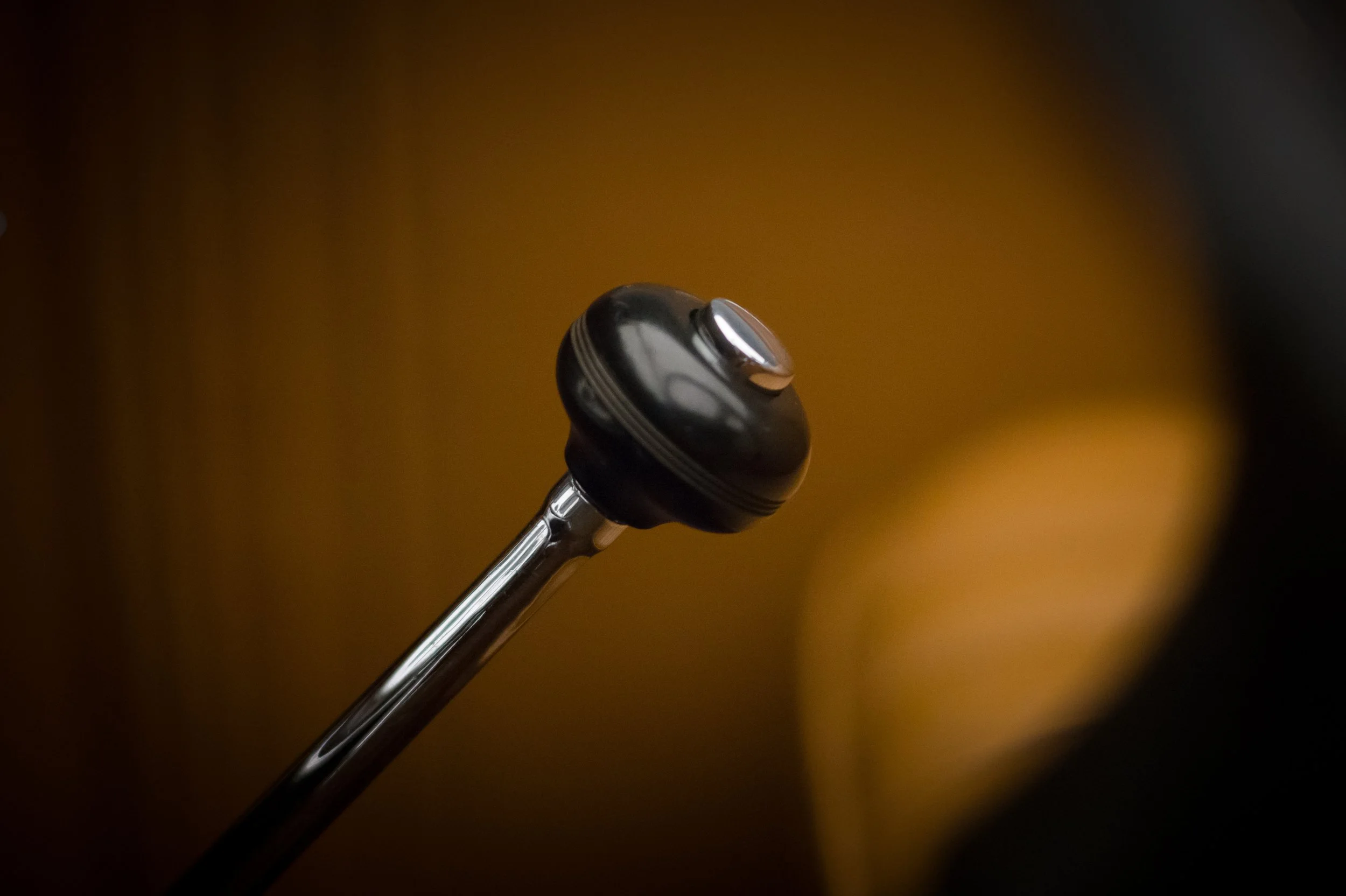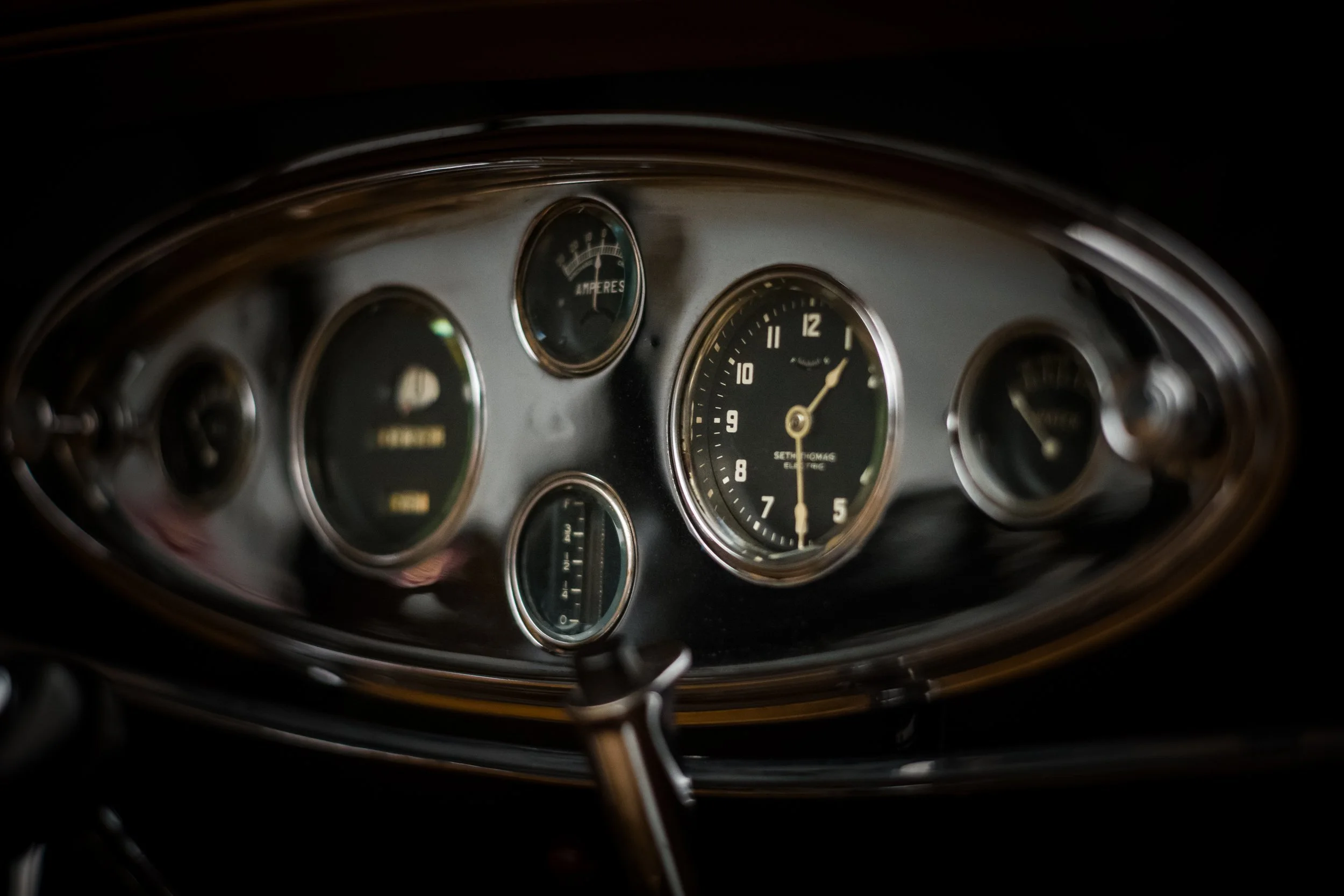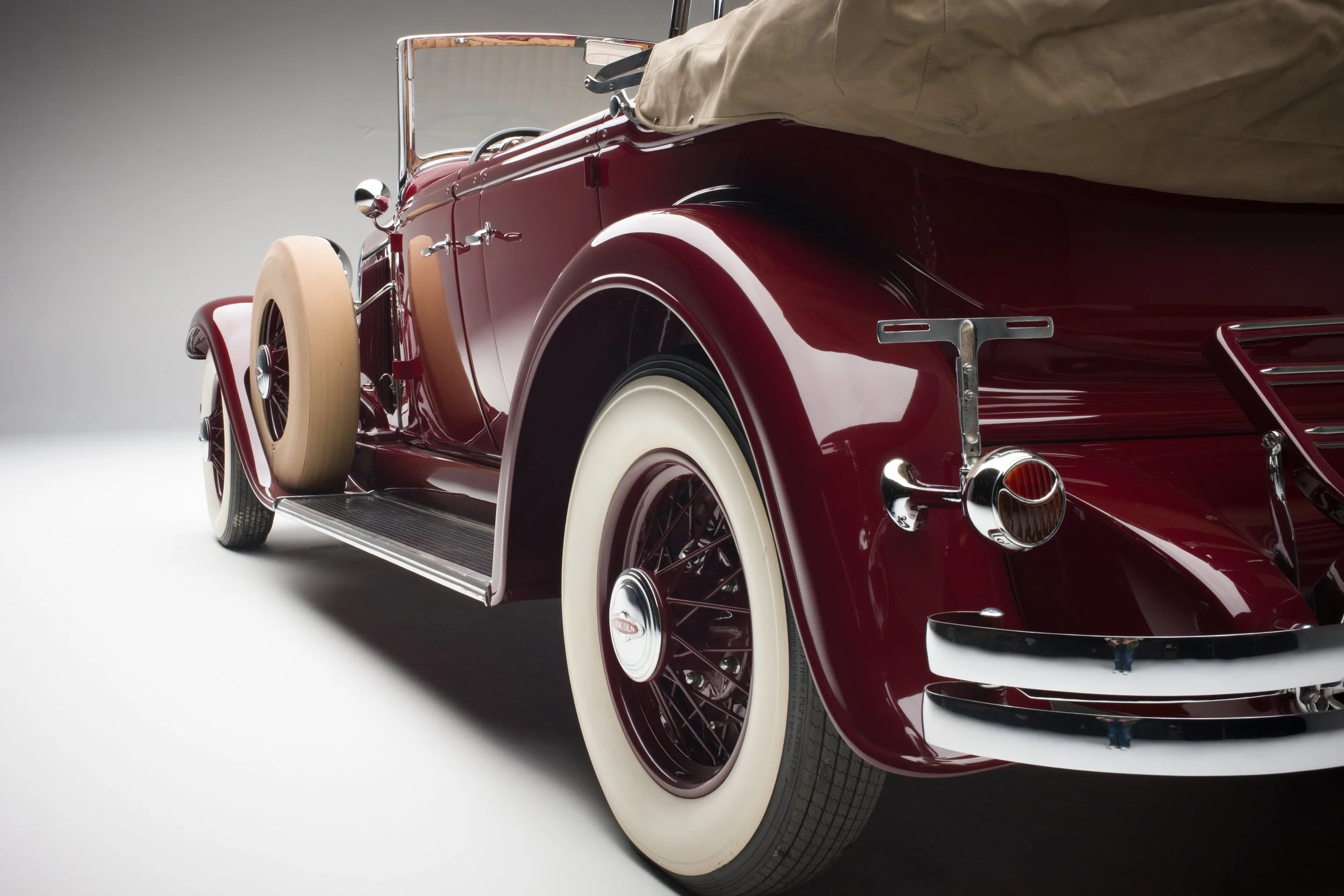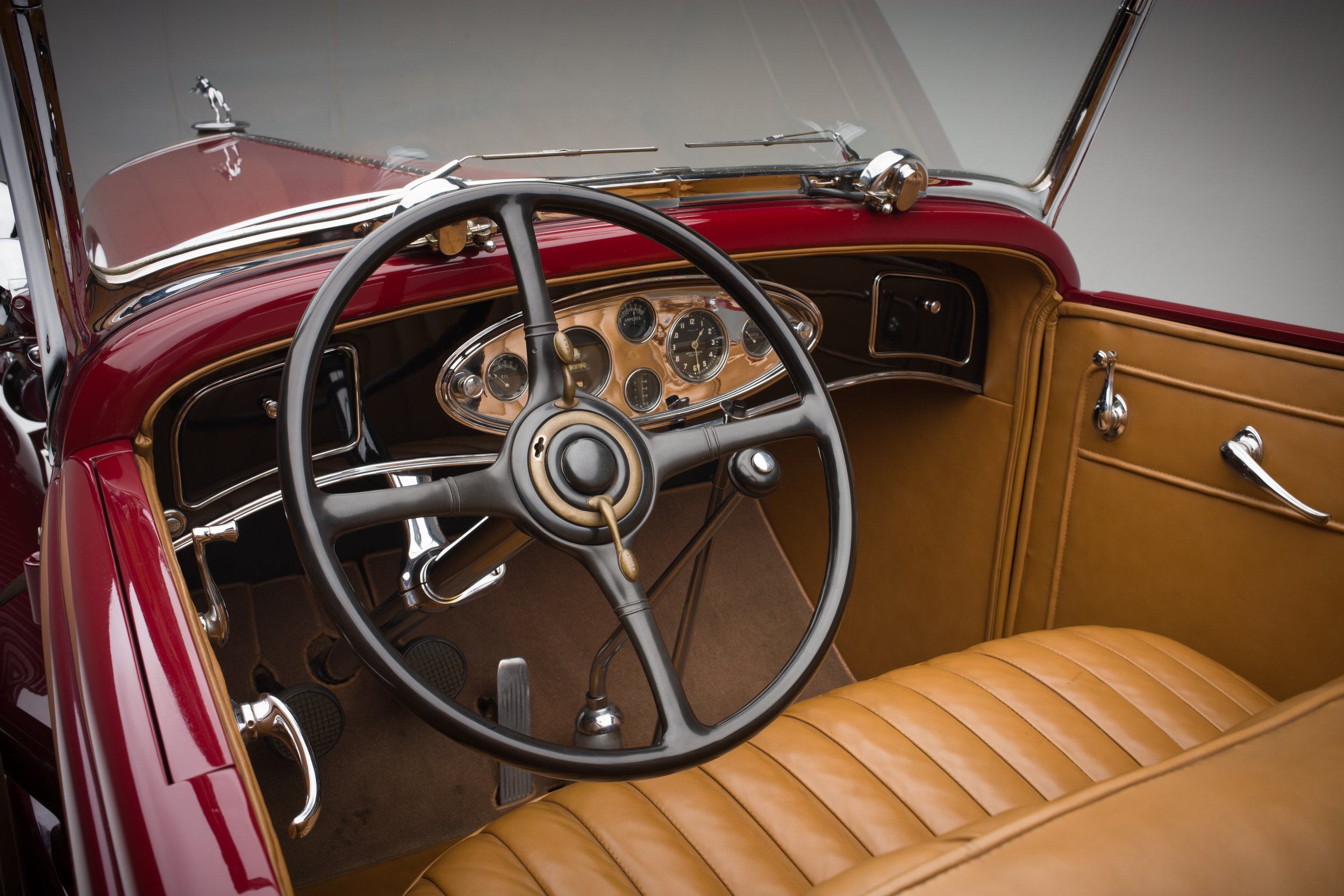1931 Lincoln Model K Sport Phaeton













1931 Lincoln Model K Sport Phaeton
For almost the last decade, Lincoln design and engineering had changed incrementally. Lincoln founder Henry Leland himself had designed the engine, which was modified in 1928 but dated to 1920; and the Model L had used a 136-inch wheelbase since 1922. But even as Lincoln was readying their outstanding V-12 for a 1932 debut, Edsel Ford kept his eye on the V-8-powered models that had launched the company, and had chief engineer Frank Johnson redesign the Model L’s V-8.
- YEAR & MAKE - 1931 Lincoln
- MODEL NAME - K
- SERIES - 201
- MODEL/BODY/STYLE NUMBER - 202-A
- BODY TYPE - 4 Door, 5 Passenger Dual Cowl Sport Phaeton
- BODY BY - Murray Corporation of America
- # CYLS. - V8
- TRANSMISSION TYPE & NUMBER - 3 Speed, Double Dry Disc Clutch, RWD
- WEIGHT - 5,245 lbs
- ESTIMATED PRODUCTION - 77
- HP - 120
- C.I.D. - 384.8
- WHEELBASE - 145″
- PRICE NEW - $4,600
The new 1931 Lincoln Eight, as it was then known, enjoyed a 145-inch wheelbase, which Lincoln said was intended to make it much more appealing for coachbuilders. However, much more important to the company was to have a frame that would support not only the weight of a V-12, but the large, heavy bodies it would be asked to carry, Evidence of that is seen in the three inches of length added to the hood and cowl section, making room for a larger engine. At the same time, bodies were dropped a full four inches closer to the road. A nine-and-a-half inch deep double drop frame accounted for two inches of the lowering; a half-inch was bought by reducing road wheel diameter from 20 to 19 inches; and the rest through a new body mounting system that put the brackets outside of the frame, rather than on top.
The overall effect was dramatic, and together with a pointed radiator; belt molding carried straight over the hood; and a fixed, sloped windshield, it thoroughly emphasised the car’s sporting characteristics. In addition to coachbuilt bodies, Lincoln took advantage of this as well, introducing the lovely Sport Phaeton at the new York Auto Salon.
The looks were amply backed up by a 130% increase in output from the 384.8-cu.in. fork-and-blade V-8, up to 120hp from 90. Lincoln credited this largely to improvements in breathing, removing exhaust jacketing from the intake manifold; and for the first time in an American car, adopting a Stromberg dual-downdraught carburetor. In keeping with popular practice, a freewheeling transmission with synchronized upper gears was adopted as well. “The Model K is so outstanding in performance as to be well within the category of a sports car,” said Autocar in 1931.
Lincoln factory records show they sold sold 3,556 1931 Model Ks, including chassis. Murray Corporation of America, which had very close ties to Ford and controlled famed coachbuilders Dietrich, built a handful of custom Lincolns, including 77 of these type 202a four-door, passenger sport phaetons. Originally sold in Oklahoma, it was restored by California collector Donald Westerdale in 1983 for a 1984 AACA National First Prize and First Place at the 1984 Philadelphia Concours d’Elegance. Further details of early ownership history are forthcoming.
Lincoln discontinued the V-8 after 1932, when their V-12 was introduced. The 145-inch wheelbase V-8 Lincolns are the last vestige of Henry Leland, in most distinguished chassis. and it could scarcely be shown off to more dramatic effect than in a sporty, Sport Touring body.
The new 1931 Lincoln Eight, as it was then known, enjoyed a 145-inch wheelbase, which Lincoln said was intended to make it much more appealing for coachbuilders. However, much more important to the company was to have a frame that would support not only the weight of a V-12, but the large, heavy bodies it would be asked to carry, Evidence of that is seen in the three inches of length added to the hood and cowl section, making room for a larger engine. At the same time, bodies were dropped a full four inches closer to the road. A nine-and-a-half inch deep double drop frame accounted for two inches of the lowering; a half-inch was bought by reducing road wheel diameter from 20 to 19 inches; and the rest through a new body mounting system that put the brackets outside of the frame, rather than on top.
The overall effect was dramatic, and together with a pointed radiator; belt molding carried straight over the hood; and a fixed, sloped windshield, it thoroughly emphasised the car’s sporting characteristics. In addition to coachbuilt bodies, Lincoln took advantage of this as well, introducing the lovely Sport Phaeton at the new York Auto Salon.
The looks were amply backed up by a 130% increase in output from the 384.8-cu.in. fork-and-blade V-8, up to 120hp from 90. Lincoln credited this largely to improvements in breathing, removing exhaust jacketing from the intake manifold; and for the first time in an American car, adopting a Stromberg dual-downdraught carburetor. In keeping with popular practice, a freewheeling transmission with synchronized upper gears was adopted as well. “The Model K is so outstanding in performance as to be well within the category of a sports car,” said Autocar in 1931.
Lincoln factory records show they sold sold 3,556 1931 Model Ks, including chassis. Murray Corporation of America, which had very close ties to Ford and controlled famed coachbuilders Dietrich, built a handful of custom Lincolns, including 77 of these type 202a four-door, passenger sport phaetons. Originally sold in Oklahoma, it was restored by California collector Donald Westerdale in 1983 for a 1984 AACA National First Prize and First Place at the 1984 Philadelphia Concours d’Elegance. Further details of early ownership history are forthcoming.
Lincoln discontinued the V-8 after 1932, when their V-12 was introduced. The 145-inch wheelbase V-8 Lincolns are the last vestige of Henry Leland, in most distinguished chassis. and it could scarcely be shown off to more dramatic effect than in a sporty, Sport Touring body.
